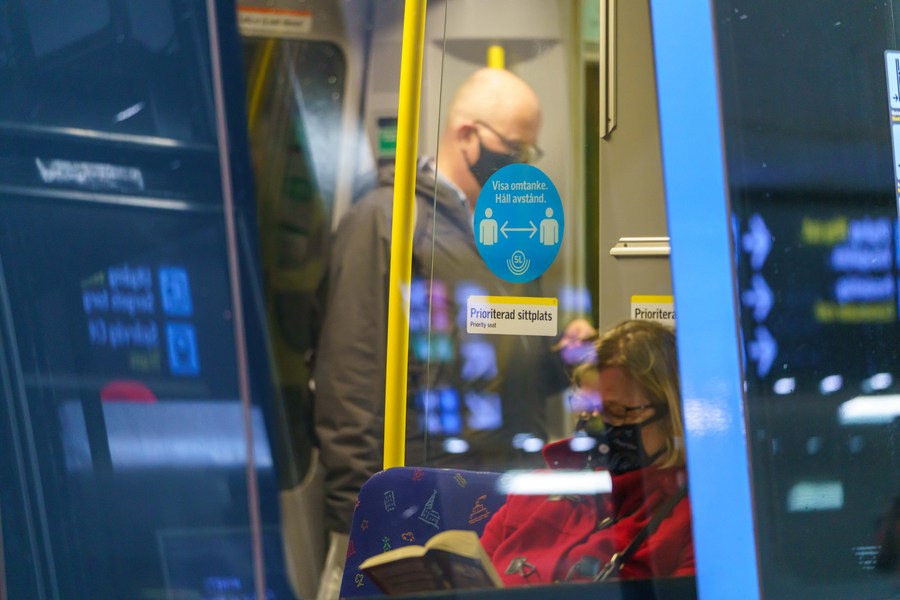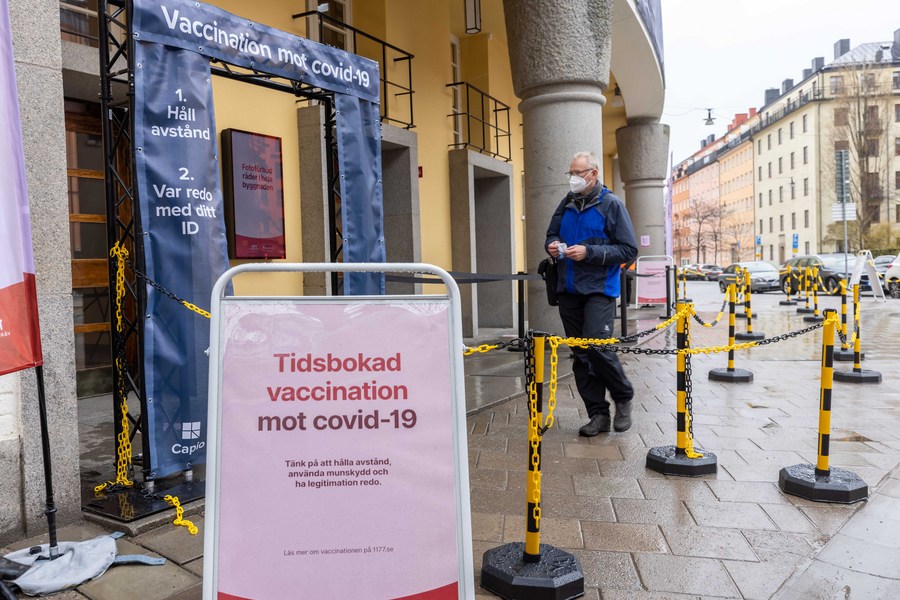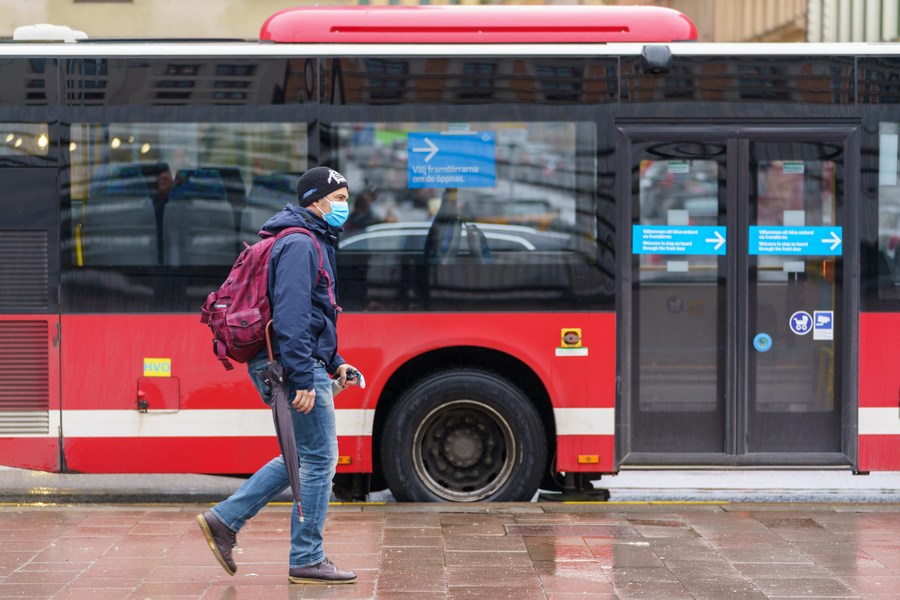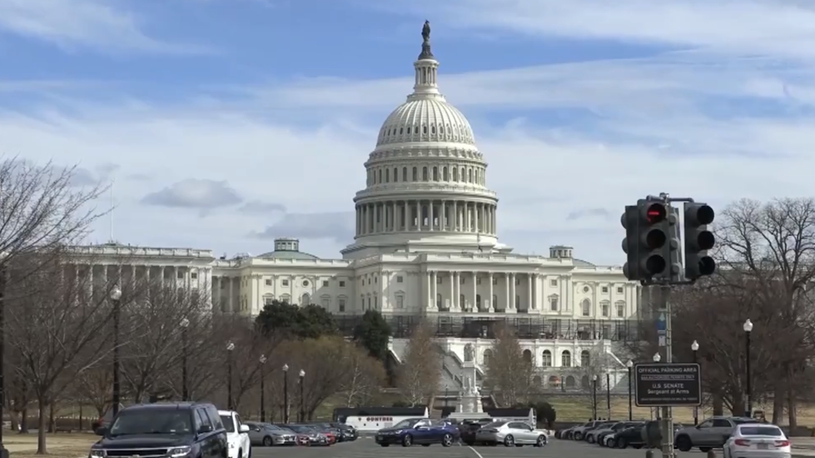
A woman wearing a face mask waits for the approaching metro train at the platform in central station in Stockholm, capital of Sweden, on May 6, 2021. (Photo by Wei Xuechao/Xinhua)
Reinfections appear to be far from rare. The emergence of the Omicron variant of coronavirus dramatically increased the number of active cases throughout Sweden, which removed virtually all COVID-19 restrictions on Feb. 9.
STOCKHOLM, Feb. 23 (Xinhua) -- "I was coughing, nauseous and had a headache. My entire body was aching," a Swedish man who was recently diagnosed with COVID-19 for the fourth time despite being fully vaccinated told Xinhua.
"At the beginning of this month, I fell ill once again," he said. Speaking on condition of anonymity, the 43-year-old said that he recognized the symptoms from previous infections, which added to his sense of helplessness. "I was also extremely tired and bedridden for two weeks."
By then, he had already weathered three confirmed infections. The first time, he recalled, he fell ill in the spring of 2020. At the time, his symptoms were similar to those during his most recent illness, though not as severe. He got reinfected the second time four months later. He then tested positive and had relatively mild symptoms.
But the nightmare did not end there. He once again tested positive in the autumn of 2021 despite working from home, shopping for groceries online and avoiding crowded spaces outdoors. He suspects that he might have contracted the virus from his children, as Sweden has kept primary schools open throughout the pandemic.
Reinfections appear to be far from rare. The emergence of the Omicron variant of coronavirus dramatically increased the number of active cases throughout Sweden, which removed virtually all COVID-19 restrictions on Feb. 9.
In the first week of February, reinfections accounted for 11 percent of all confirmed cases in Sweden, according to a report released by the country's Public Health Agency on Feb. 18. A month earlier, the respective figure was just over five percent.

Photo taken on May 6, 2021 shows a sign asking people to keep social distance in a metro compartment in Stockholm, capital of Sweden. (Photo by Wei Xuechao/Xinhua)
While reinfections already occurred during the first year of the pandemic, they have become more common as the spike proteins of the virus have evolved, Ali Mirazimi, professor of clinical virology at the Karolinska Institutet medical university here, told Xinhua.
"Omicron is very different from the previous virus variants, which has contributed to the increase in the number of reinfections," he said, adding that although vaccines and previous infections lessen the risk of severe illness and death, immunity wanes fast.
Since the beginning of the pandemic, Sweden has employed a "light touch" lockdown strategy, resulting in the country becoming the most affected of all five Nordic states in terms of deaths. It has registered more than twice as many deaths per capita as Denmark and nearly six times as many as Norway.
The utility of mask-wearing was also questioned by the Swedish authorities -- at least at the beginning. Later on, they started to promote mask-wearing in crowded indoor spaces, and this confused the public.
When Omicron hit the country with full force in January, critical services were at risk of collapse due to an extraordinary number of employees being off sick or in quarantine. To prevent this from happening, the government decided to relax the quarantine rules.
Only three weeks later, the restrictions were scrapped despite the World Health Organization's (WHO) repeated warning that the restrictions must not be removed too soon.
The effect of the relaxation was immediate with people rushing to bars and restaurants despite the still high number of infections. Meanwhile, many vaccination centers reported waves of canceled appointments.

A man walks into a COVID-19 vaccination center in Stockholm, capital of Sweden, on May 6, 2021. (Photo by Wei Xuechao/Xinhua)
Sweden's decision to remove the COVID-19 restrictions was nevertheless rather uncontroversial and unchallenged within the country. The only concern raised was whether all restrictions should be lifted at once.
"It is impossible to say whether the restrictions were removed at the right time or whether it should have happened one or a few weeks later. But for society to function, they had to be removed sooner or later," Mirazimi said.
On Feb. 21, the Swedish Public Health Agency released a report on how the situation may develop. In one scenario, the agency speculates that another virus variant may emerge and lead to yet another peak before the summer. Although this is considered unlikely, there are concerns that COVID-19 could have other potentially widespread consequences.
Following his most recent symptoms, the 43-year-old Swede, who has already had COVID-19 four times, is still in constant pain. "I also suffer from short-term memory loss and struggle to remember what happened the previous day."
Because of this, he is scheduled to be examined for a possible post-COVID condition, which experts describe as a wide range of returning or ongoing health problems.
Nearly 6,700 individuals in Sweden have been diagnosed with post-COVID-19 syndrome since October 2020, according to statistics released by the Swedish National Board of Health and Welfare last week.
In absence of thorough research, Mirazimi could not predict whether post-COVID could become more prevalent when more individuals are reinfected.
"We have very little knowledge. After all, we hardly even know why people get post-COVID in the first place," he said.

A man wearing face mask walks past a bus at Odenplan station in central Stockholm, capital of Sweden, on May 6, 2021. (Photo by Wei Xuechao/Xinhua)■












